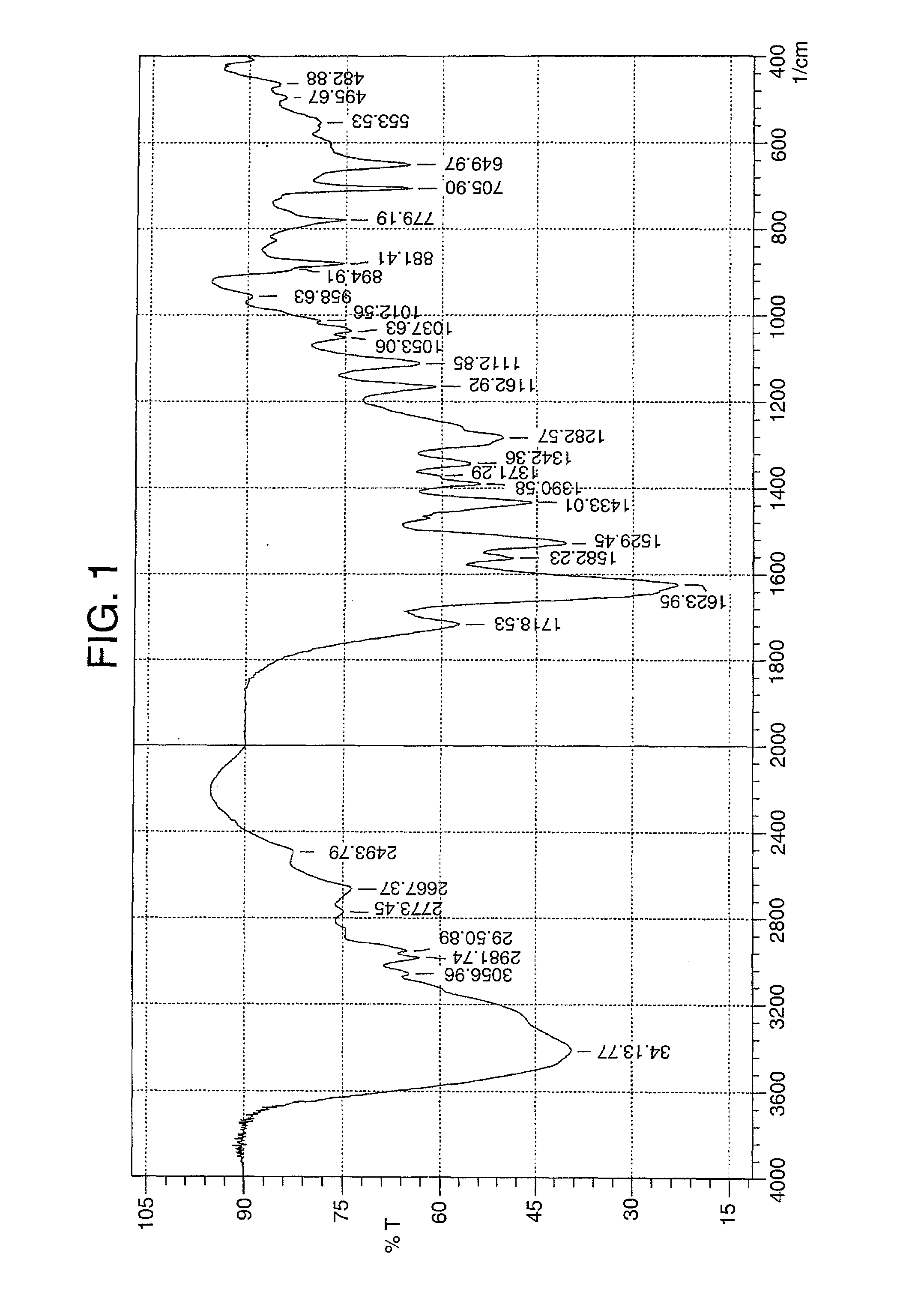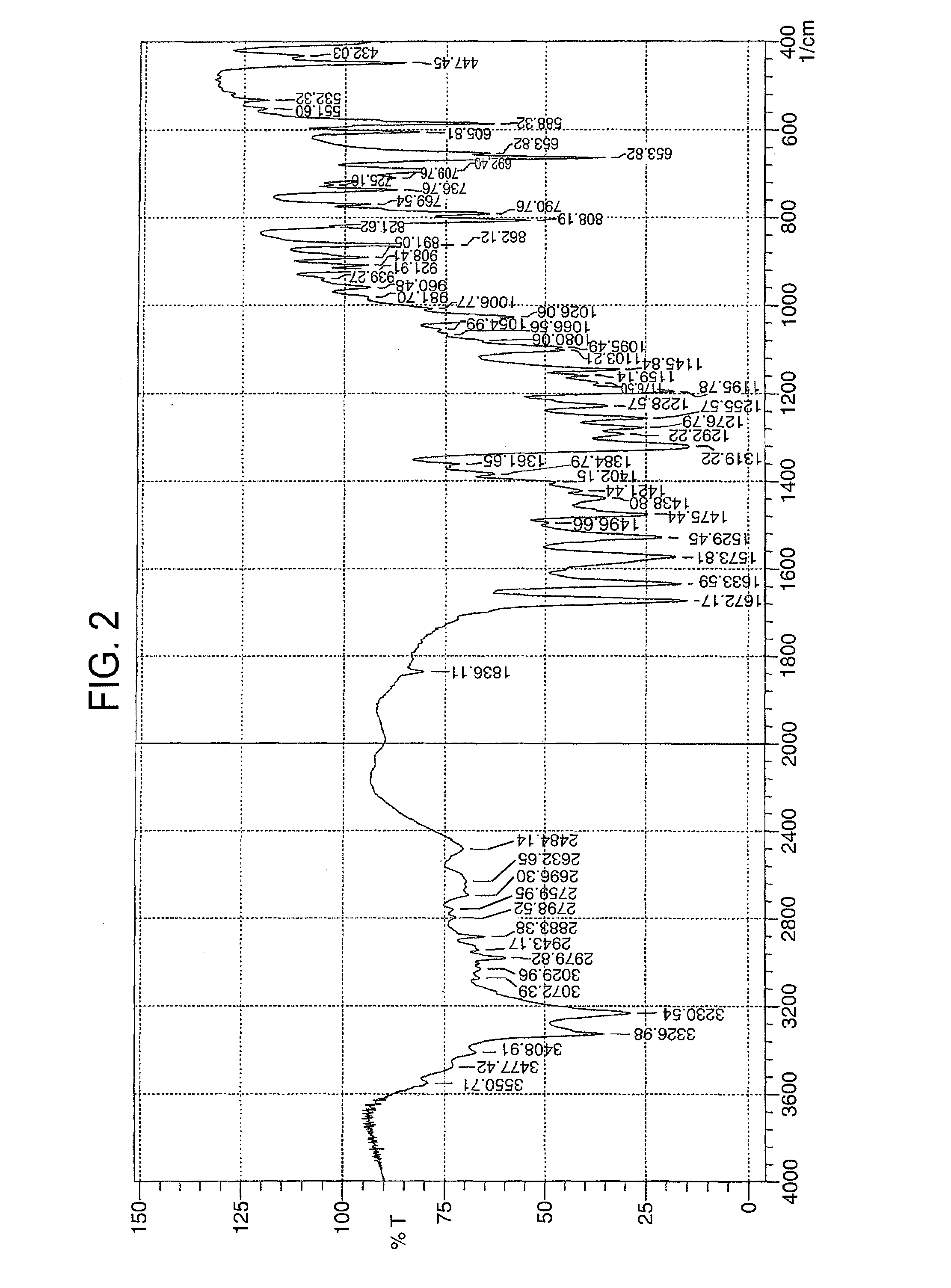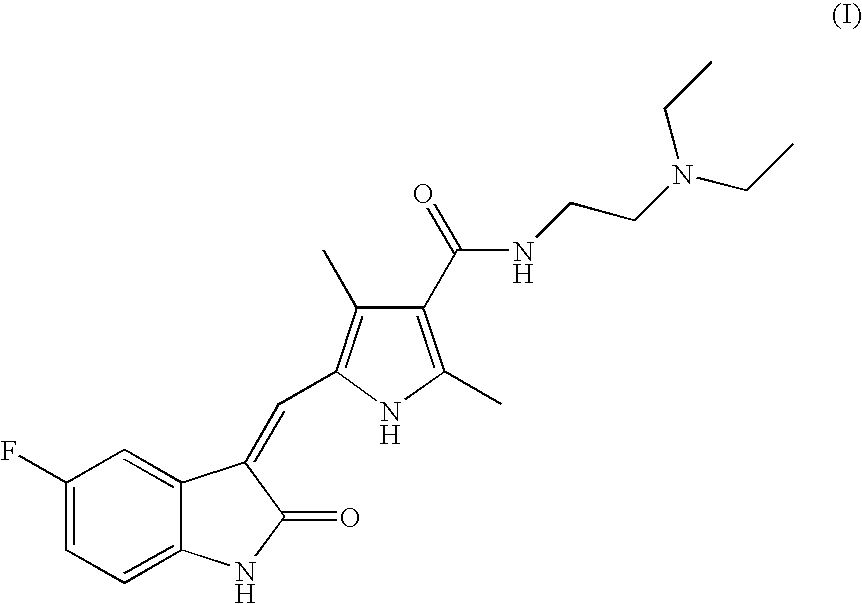Process For Preparing A 3-Pyrrole Substituted 2-Indolinone Malate Salt
a technology of indolinone malate and pyrrole, which is applied in the field of process for preparing a 3pyrrole substituted 2indolinone malate salt, can solve the problems of cumbersome dissolution and treatment of the preparation of the corresponding pharmaceutically acceptable salt (e.g., sunitinib malate), difficult to handle solid sunitinib base, and significant drawbacks, so as to avoid the obtaining, isolation and processing of sunitin
- Summary
- Abstract
- Description
- Claims
- Application Information
AI Technical Summary
Benefits of technology
Problems solved by technology
Method used
Image
Examples
example 1
Preparation of the malic acid salt of 5-formyl-2,4-dimethyl-1H-pyrrole-3-carboxylic acid(2-diethylaminoethyl)amide
Malic Acid Salt of Compound of Formula II
[0032]This example describes the preparation and isolation of the malic acid salt of compound II in accordance with an embodiment of the invention.
[0033]7.05 g of 5-formyl-2,4-dimethyl-1H-pyrrole-3-carboxylic acid (2-diethylaminoethyl) amide and 21 mL of n-butanol were heated to dissolution. At 57° C. a brown, slightly opaque solution was obtained and a previously prepared solution of 3.89 g L-(−)-malic acid and 20 mL of n-butanol was added dropwise, maintaining the temperature of the reaction mixture. The resulting solution was stirred for 30 minutes and then cooled to room temperature. A gummy solid was formed at 25° C. Heating the mixture to dissolution (33° C.) and cooling again produced the same gummy solid. Finally, heating the mixture to 35° C. a brownish solid started to crystallize to give a very thick suspension. An addi...
example 2
Preparation of the Malic Acid Salt of Sunitinib
Malic Acid Salt of Compound of Formula (I)
[0035]This example describes the preparation of the malic acid salt of sunitinib via reaction of the malic acid salt of compound II with compound III in accordance with an embodiment of the invention.
[0036]4.52 g of the malic acid salt of 5-formyl-2,4-dimethyl-1H-pyrrole-3-carboxylic acid (2-diethylaminoethyl) amide obtained in Example 1, 1.70 g of 5-fluoro-1,3-dihydroindol-2-one and 60 mL of n-butanol were stirred at room temperature. 46.5 μL of pyrrolidine were then added and the suspension was heated to reflux. Complete dissolution of the materials was observed at 79° C. Once at reflux, an orange solid started to crystallize. The reaction was monitored by TLC and after 2.25 h at reflux it was complete. The suspension was then cooled to 0-5° C., stirred for 1 h and filtered. The collected solid was washed with 2×9 mL of n-butanol and then dried at 60° C. for 4 h under vacuum to give 5.26 g (87...
example 3
Preparation of the Malic Acid Salt of Sunitinib
Malic Acid Salt of Compound of Formula (I)
[0039]In accordance with an embodiment of the invention, this example describes the preparation of the malic acid salt of sunitinib via (i) preparation of the malic acid salt of compound II without isolation, and (ii) reaction of the non-isolated malic acid salt of compound II with compound III.
[0040]2.50 g of 5-formyl-2,4-dimethyl-1H-pyrrole-3-carboxylic acid (2-diethylaminoethyl) amide and 25 mL of n-butanol were heated to 48° C. to completely dissolve the solid. A previously prepared solution of 1.50 g L-(−)-malic acid and 7.5 mL of n-butanol was then added dropwise to the reaction mixture while maintaining the reaction temperature. Once addition was complete stirring was continued for 15 minutes. A previously prepared solution of 1.43 g of 5-fluoro-1,3-dihydroindol-2-one and 20 mL n-butanol was then added dropwise while maintaining the temperature of the reaction mixture. After the addition ...
PUM
| Property | Measurement | Unit |
|---|---|---|
| volume | aaaaa | aaaaa |
| temperature | aaaaa | aaaaa |
| temperature | aaaaa | aaaaa |
Abstract
Description
Claims
Application Information
 Login to View More
Login to View More - R&D
- Intellectual Property
- Life Sciences
- Materials
- Tech Scout
- Unparalleled Data Quality
- Higher Quality Content
- 60% Fewer Hallucinations
Browse by: Latest US Patents, China's latest patents, Technical Efficacy Thesaurus, Application Domain, Technology Topic, Popular Technical Reports.
© 2025 PatSnap. All rights reserved.Legal|Privacy policy|Modern Slavery Act Transparency Statement|Sitemap|About US| Contact US: help@patsnap.com



